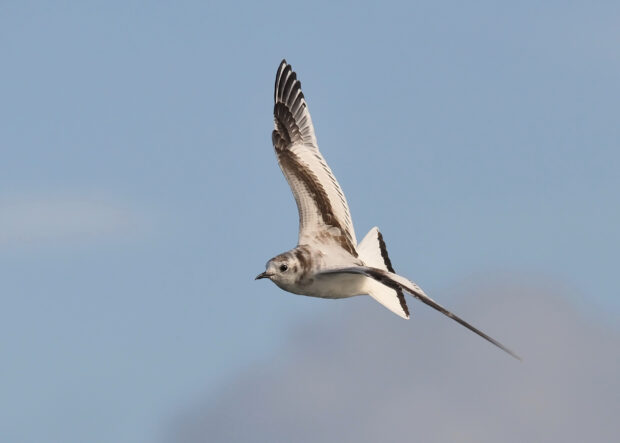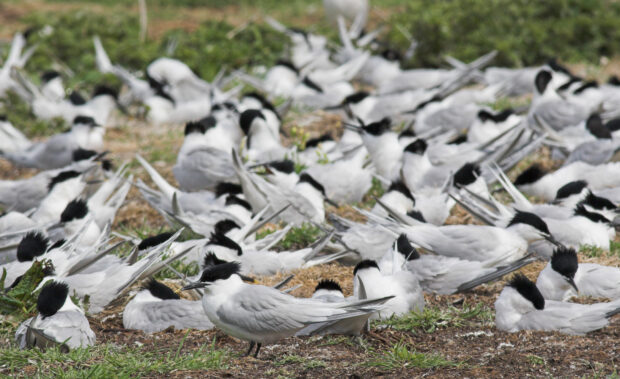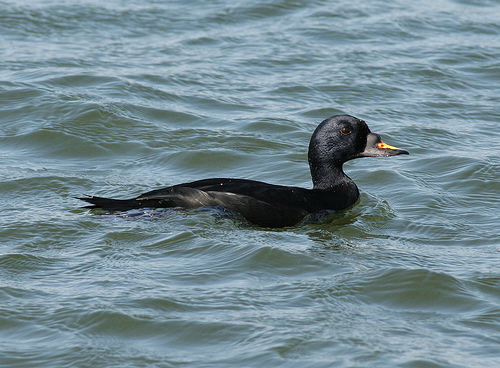
Have you ever been asked to name a UK seabird on the spot? Seagulls probably come to mind first, right? Or maybe you think about those charismatic puffins or bustling ‘seabird cities’ of guillemots.
We’re actually home to some of the biggest and best seabird colonies in the world, with over one hundred diverse species of marine bird sharing the marine environment around our coast. Twenty-five of these species breed here, with others visiting from further afield to escape winter chill.
They come in all different shapes and sizes, from the northern gannet with wingspans up to 1.8 metres, to the tiny storm petrel, weighing around the same as a pencil! Each one has unique and distinct characteristics, such as the bright red feet of the black guillemot, or the foul-smelling oil fulmars spit to protect their nests from intruders.
We’d also like to point out that ‘seagull’ is not an actual species, there are in fact many different types of gull.
The little gull for instance is a distinct species and is protected by the offshore marine protected area (MPA) network in England.
The importance of seabird protection
Many of our local and migrant seabird populations are of huge international importance. They are an essential part of the marine ecosystem, and our coastline plays a crucial role in supporting these populations.
Globally, birds are threatened by a range of factors such as climate change, habitat loss and disturbance as well as avian flu. 24 of the 25 UK breeding seabird species are at risk of local or global extinction, with the number of breeding seabirds falling by almost a quarter in the last 20 years. Their protection is becoming increasingly important in helping to tackle these threats.
Sites designated to protect marine birds
There are three offshore MPAs in England protecting six types of bird as well as other important birds (waterbird assemblage) in some areas. Two of the MPAs can be found off the east coast of England, and the other is located off the coast of north west England.
They include:
- Greater Wash MPA
- Liverpool Bay MPA
- Outer Thames Estuary MPA.
Let us introduce you to some of the birds protected by these areas!
Red-throated diver
- Protected in all three offshore MPAs.
- Visit the UK to over-winter.
- The smallest of the diver species.
- They feed on a range of small fish such as sandeels, herring and sprat.
- As hinted by their name, red-throated divers feed by diving below the water’s surface.

Terns
- Three types of tern are protected in England’s offshore MPAs: Sandwich tern, common tern and little tern.
- The bulk of their diet consists of small fish.
- They feed by dipping and plunge diving into the water.
- They range in length from about 20 to 55 cm (unsurprisingly the little tern is the smallest of our tern species)
- They are related to gulls, but are more slender, with shorter legs and longer wings.

Sandwich tern colony, © Natural England/Allan Drewitt 03-Jun-06
Little gull
- Eats mainly insects, small fish and marine invertebrates such as crustaceans, small molluscs and worms.
- The world’s smallest gull, up to 27 cm in length.
- They have a compact body with small legs, short rounded wings and a small bill.
- In the breeding season, they have a blackish ‘hood’.
- Feed by flying slowly and dipping into the water surface or plunge diving.
Common scoter
- A type of seaduck with dark feathers.
- They dive to hunt for food.
- Feed on shellfish such as mussels and clams.
- They are often seen as large bobbing rafts offshore.
- The UK breeding population has fallen significantly and they are now a Red List species.

Take part in our latest call for evidence and help inform marine bird protection
We’re currently asking for your evidence and views on the impacts of fishing on harbour porpoise and marine bird MPAs.
Your views and evidence will shape fisheries management decisions to ensure marine birds are protected. Please ensure you support this work before it closes on 13 February 2024.